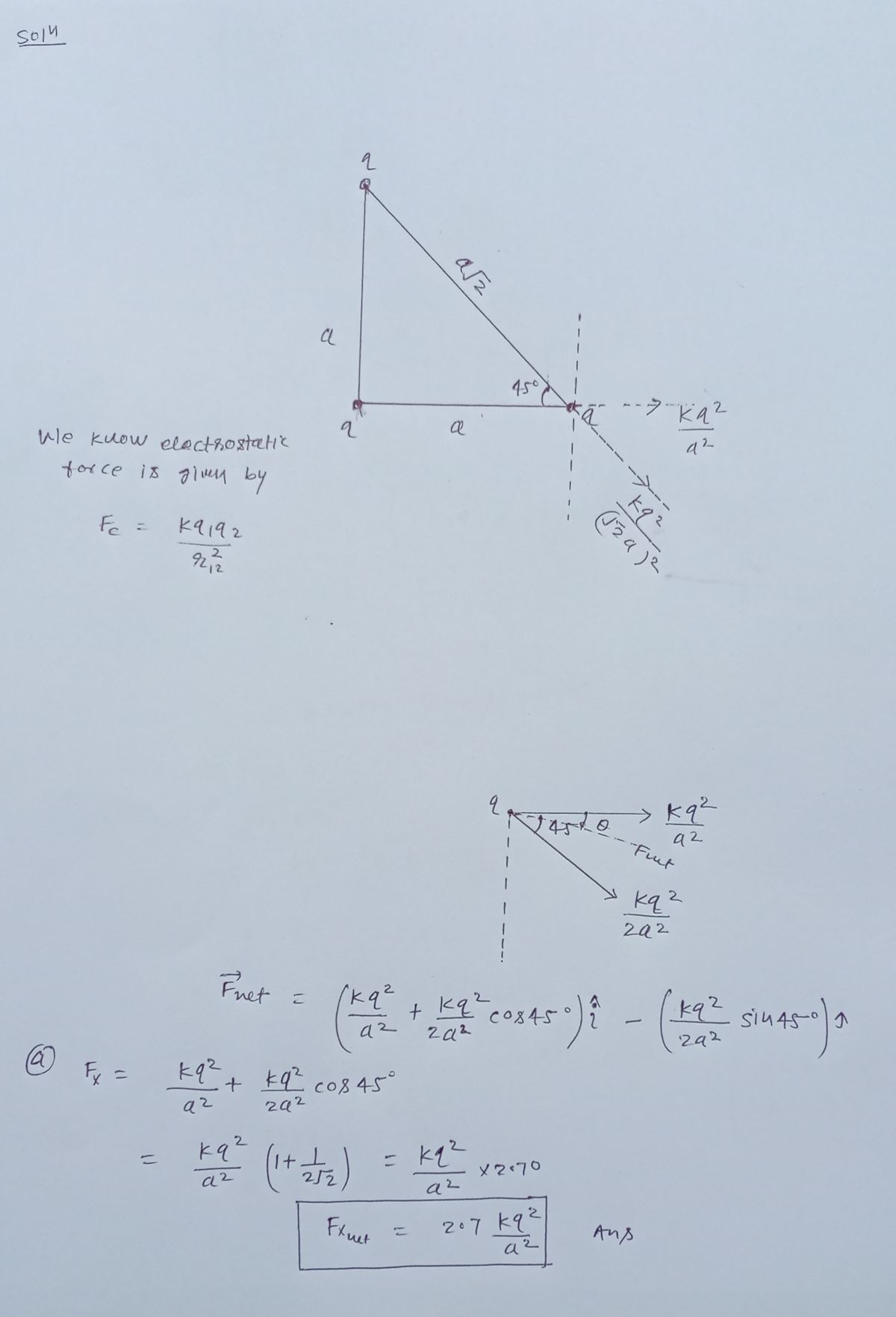Three point charges are arranged in a right-angle isosceles triangle as in the figure below. The angle between the two short sides is 90 degrees. The two short sides of the triangle have length a. All charges have the same value q. Most of this problem uses symbols—unless otherwise noted, use a, q and other symbols as needed. You will be investigating the net force on the charge in the lower right corner due to the other two charges. As needed, assume a right-handed coordinate system shown below:
Three point charges are arranged in a right-angle isosceles triangle as in the figure below. The angle between the two short sides is 90 degrees. The two short sides of the triangle have length a. All charges have the same value q. Most of this problem uses symbols—unless otherwise noted, use a, q and other symbols as needed. You will be investigating the net force on the charge in the lower right corner due to the other two charges. As needed, assume a right-handed coordinate system shown below:
(a) What is the x-component Fxnet of the net force on the charge in the lower right corner due to the other two charges?
(b) What is the y-component Fynet of the net force on the charge in the lower right corner due to the other two charges?
(c) What is the angle the net force makes with the positive x-axis. Note: In this case, your answer will be a number. Give your answer in degrees.
(d) What is the magnitude of the net force on the charge in the lower right corner due to the other charges?
(e) Assume a = 1.00 m and q = 2.00 x 10-6 C. Plug in these numbers to evaluate the magnitude of the net force on the charge in the lower right corner due to the other charges?
(f) (5 points) Make a sketch of the net force vector on the x-y axes below with the tail of the arrow at the origin. Label the angle with the x-axis. What quadrant does the vector lie in? Your picture should indicate the correct quadrant.



Trending now
This is a popular solution!
Step by step
Solved in 3 steps with 3 images









